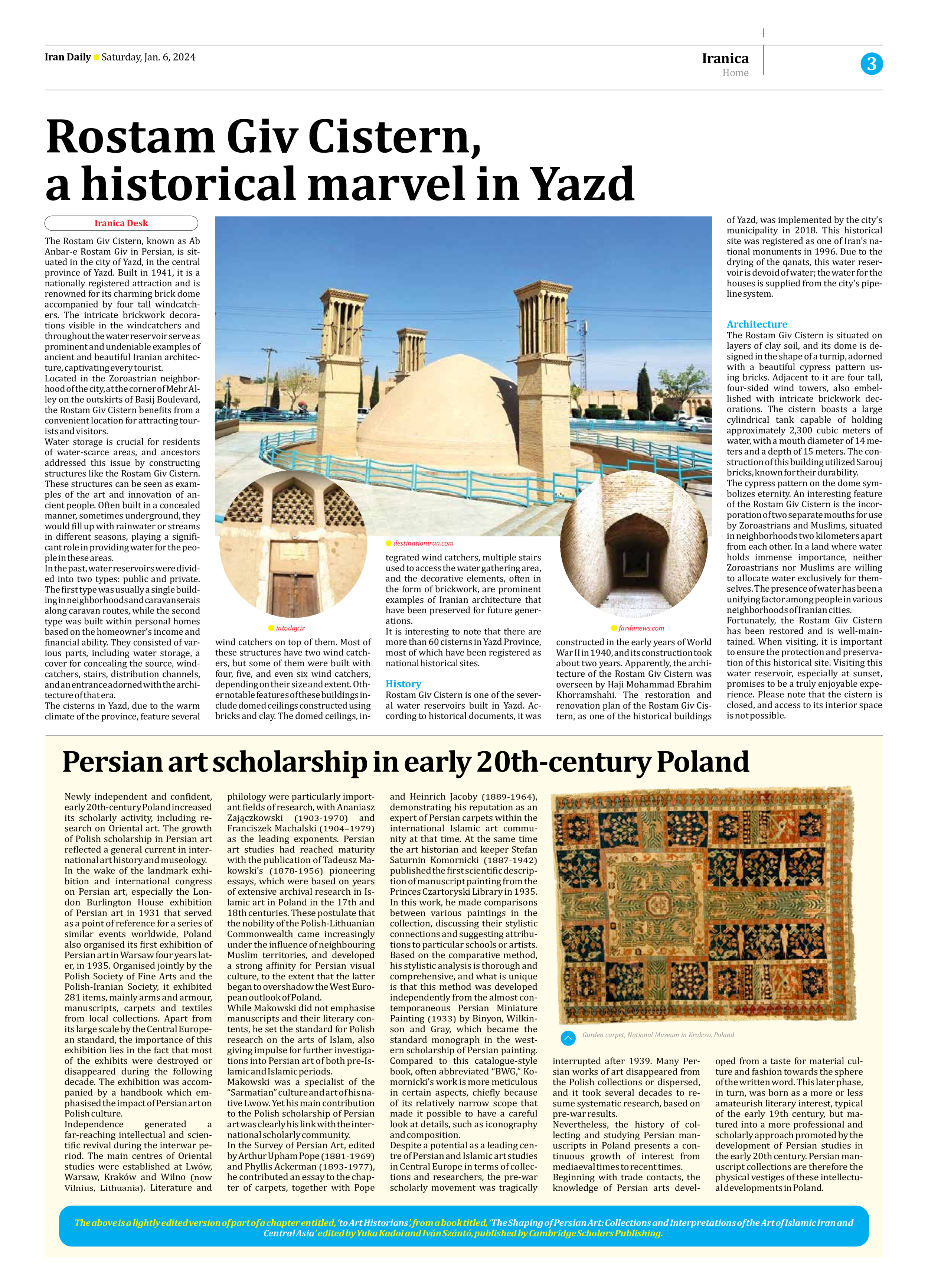
Rostam Giv Cistern, a historical marvel in Yazd
The Rostam Giv Cistern, known as Ab Anbar-e Rostam Giv in Persian, is situated in the city of Yazd, in the central province of Yazd. Built in 1941, it is a nationally registered attraction and is renowned for its charming brick dome accompanied by four tall windcatchers. The intricate brickwork decorations visible in the windcatchers and throughout the water reservoir serve as prominent and undeniable examples of ancient and beautiful Iranian architecture, captivating every tourist.
Located in the Zoroastrian neighborhood of the city, at the corner of Mehr Alley on the outskirts of Basij Boulevard, the Rostam Giv Cistern benefits from a convenient location for attracting tourists and visitors.
Water storage is crucial for residents of water-scarce areas, and ancestors addressed this issue by constructing structures like the Rostam Giv Cistern. These structures can be seen as examples of the art and innovation of ancient people. Often built in a concealed manner, sometimes underground, they would fill up with rainwater or streams in different seasons, playing a significant role in providing water for the people in these areas.
In the past, water reservoirs were divided into two types: public and private. The first type was usually a single building in neighborhoods and caravanserais along caravan routes, while the second type was built within personal homes based on the homeowner’s income and financial ability. They consisted of various parts, including water storage, a cover for concealing the source, windcatchers, stairs, distribution channels, and an entrance adorned with the architecture of that era.
The cisterns in Yazd, due to the warm climate of the province, feature several wind catchers on top of them. Most of these structures have two wind catchers, but some of them were built with four, five, and even six wind catchers, depending on their size and extent. Other notable features of these buildings include domed ceilings constructed using bricks and clay. The domed ceilings, integrated wind catchers, multiple stairs used to access the water gathering area, and the decorative elements, often in the form of brickwork, are prominent examples of Iranian architecture that have been preserved for future generations.
It is interesting to note that there are more than 60 cisterns in Yazd Province, most of which have been registered as national historical sites.
History
Rostam Giv Cistern is one of the several water reservoirs built in Yazd. According to historical documents, it was constructed in the early years of World War II in 1940, and its construction took about two years. Apparently, the architecture of the Rostam Giv Cistern was overseen by Haji Mohammad Ebrahim Khorramshahi. The restoration and renovation plan of the Rostam Giv Cistern, as one of the historical buildings of Yazd, was implemented by the city’s municipality in 2018. This historical site was registered as one of Iran’s national monuments in 1996. Due to the drying of the qanats, this water reservoir is devoid of water; the water for the houses is supplied from the city’s pipeline system.
Architecture
The Rostam Giv Cistern is situated on layers of clay soil, and its dome is designed in the shape of a turnip, adorned with a beautiful cypress pattern using bricks. Adjacent to it are four tall, four-sided wind towers, also embellished with intricate brickwork decorations. The cistern boasts a large cylindrical tank capable of holding approximately 2,300 cubic meters of water, with a mouth diameter of 14 meters and a depth of 15 meters. The construction of this building utilized Sarouj bricks, known for their durability.
The cypress pattern on the dome symbolizes eternity. An interesting feature of the Rostam Giv Cistern is the incorporation of two separate mouths for use by Zoroastrians and Muslims, situated in neighborhoods two kilometers apart from each other. In a land where water holds immense importance, neither Zoroastrians nor Muslims are willing to allocate water exclusively for themselves. The presence of water has been a unifying factor among people in various neighborhoods of Iranian cities.
Fortunately, the Rostam Giv Cistern has been restored and is well-maintained. When visiting, it is important to ensure the protection and preservation of this historical site. Visiting this water reservoir, especially at sunset, promises to be a truly enjoyable experience. Please note that the cistern is closed, and access to its interior space is not possible.







